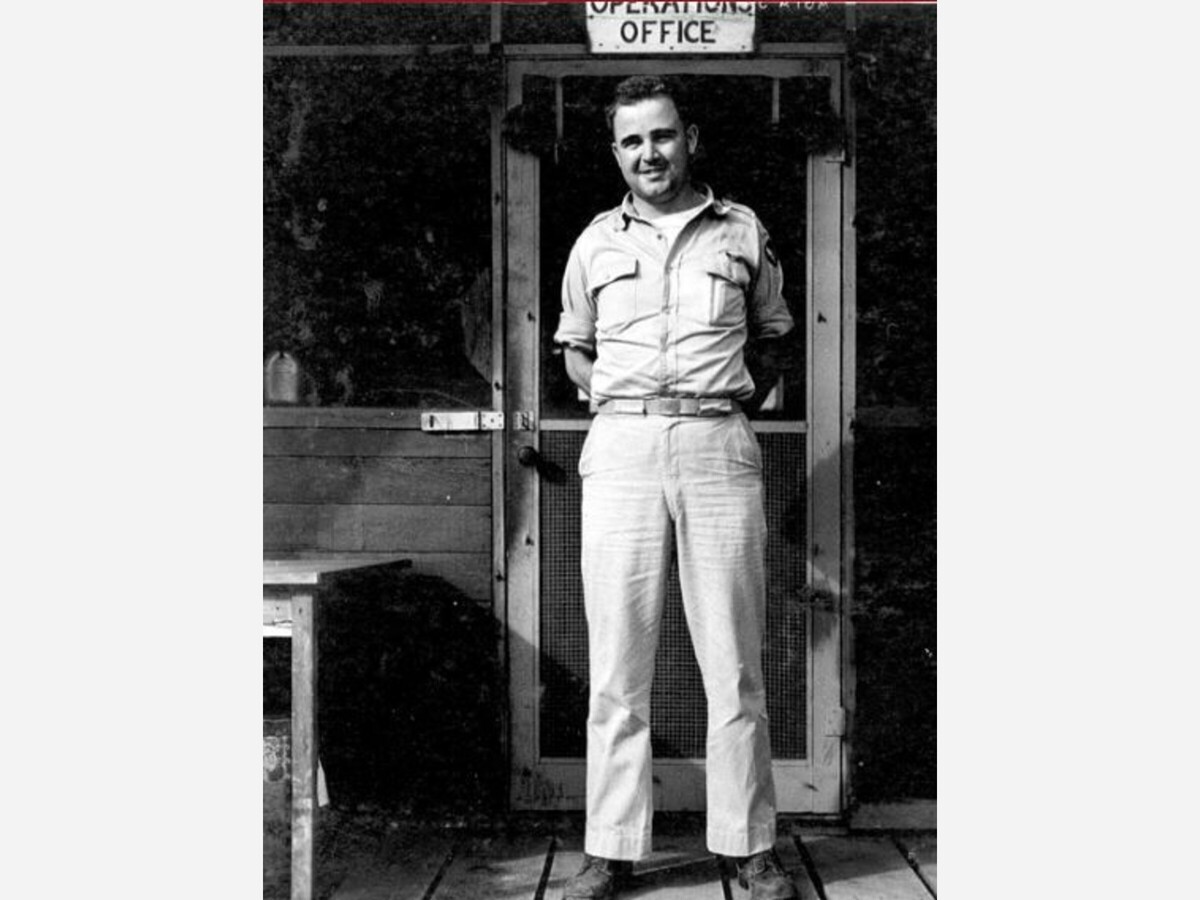Image


From the golf links of a South Shore country club in the late 1930s to Franklin in the 1990s, with stops along the way that happened to include dropping an atomic bomb. It’s a life story with lots of improbabilities. We pick up the thread in the summer of 1939.
The possibility that the US might get dragged into World War II was the last thing on the mind of a happy kid from Quincy, Charles W. Sweeney, who had already learned a lot about people as a caddy at the only country club in the area that catered to Boston’s well-heeled Catholics. The peacetime draft hadn’t gotten under way. But for one of Sweeney’s friends, concern about the possibility of a draft was pushing him to seek entry to the US Army Air Corps rather than settling for a billet in the regular Army. The friend had hired a local pilot to take him on a first airplane ride on a biplane out of Squantum, and the friend suggested Sweeney come along.
Although he claimed he had never had much interest in flying, let alone being a pilot, the experience transformed Sweeney. And it was he, rather than his planful friend, that ended up securing a slot in Army flight school about a year later. And though training was tough and sometimes deadly, Sweeney seemed to have the “right stuff:” He could fly anything, it seemed, and by hook and by crook, often did. In addition to being a gifted young pilot, he also had social skills, learned among the elite of the country club, and academic know how. By now, of course, Pearl Harbor had brought the whole country to attention. War absorbed everyone, and everything. But among the huge mass of young men entering every branch of the service, the sharp young pilot from Quincy stood out.
So, without even trying, he was picked out of the mass of flyers and given exotic assignments, testing new equipment and methods and, amazingly, in a matter of months, ended up in charge of operations at a bustling new airbase in the South. One of the perks was the Sweeney had the authority to fly any aircraft that showed up. And he did, becoming proficient and adaptable in the air and on the ground.
There, yet another event would transpire that would change Sweeney’s life. The “other” Manhattan project going on during World War II, was the creation of by far the world’s most advanced bomber aircraft, the B-29. Its development was hush-hush but given almost unlimited resources. It was seen as a necessity for bringing the war to Japan across the vast spaces of the Pacific. And a necessity, too, if the products of the Manhattan Project turned out to work.
So, when the young man who knew every plane Uncle Sam owned saw something totally new, a giant sleek, silvery plane coming in for a landing at his airfield, he made sure to greet it and get to know the man in charge. That turned out to be Colonel Paul Tibbets. And although the men in Tibbets elite and secret unit gave Sweeney the cold shoulder, he persisted and ended up charming his way into the group-- becoming Tibbets right-hand man.
Later, he even managed to impress the gruff and demanding General Curtis LeMay. The long and the short of it was that Sweeney became part of the squadron, with specially modified B-29s which were kept out of harm’s way until the first atom bombs were ready.
He was present when the Tibbets dropped the first atomic bomb on Hiroshima; the effects so stupendous neither he nor anyone else on the mission could imagine that the war might continue. But it did. And American authorities ordered a second nuclear strike.
Again, unexpectedly, Sweeney’s ability to think on his feet and solve problems put him in the pilot’s seat and command role when the BochsCar, not “his” airplane but one that had been flown by another commander and crew, was assigned to drop the second bomb.
The rest is history. The bomb dropped. Thanks to a number of snafus, his airplane was so low on fuel it nearly crashed, but managed to arrive at a US base in Okinawa. There, another irony of war, the base commander who greeted Sweeney was General Doolittle, whose famous raid in 1942 had been the first to hit Japan. Sweeney's for all practical purposes, was the last. And the war did end.
After the war, Sweeney continued to score achievements in the Air Force. His connection to Franklin, late in life, was tenuous and an affair of the heart. His companion lived in Franklin during part of the couple’s time together. So the jolly looking veteran some sharp-eyed folks might have spotted around town in the 1990s was indeed, that Charles Sweeney.
Sweeney, like most of those involved with the first and only atomic missions, remained convinced that the slaughter of the two bombing raids, far from the deadliest of the war, were necessary and saved American and Japanese lives.
Later in life he was quoted as saying, "As the man who commanded the last atomic mission, I pray that I retain that singular distinction." Sweeney died in 2004, his companion about a decade later.